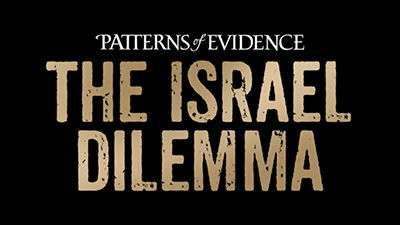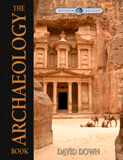
Ancient Apocalypse Review: Once There Was a Flood?
An alternative but still wrong interpretation of archaeology
In late 2022, streaming-giant Netflix released an eight-part documentary series titled Ancient Apocalypse, featuring investigative journalist Graham Hancock. Reportedly, the show garnered 25 million viewing hours in just a week and soared to Netflix’s top 10 list in 31 countries. Throughout the series, Hancock visits a variety of ancient sites in an attempt to prove his view that an advanced human civilization existed before the so-called “last ice age” and was wiped out by a massive flood over 12,000 years ago. The few survivors then traveled the world, spreading the knowledge of architecture, math, astronomy, and agriculture to hunter-gatherer societies.
His hypothesis, as he doggedly repeats in every episode, runs contrary to mainstream archaeology, and he laments that “the experts” won’t consider his ideas. But are his ideas worth considering?
Hancock’s View or the Mainstream View? They’re Both Wrong!
While rejecting much of mainstream archaeology’s interpretations and assumptions about the rise of civilization, Hancock still accepts long ages and many conventional geological and anthropological time frames. He rejects the Bible’s history in episode one, lumping the biblical account of Noah’s flood in with ancient flood myths. Because he has the wrong starting point, he, like mainstream archaeologists, comes to the wrong conclusions.
Because he has the wrong starting point, he, like mainstream archaeologists, comes to the wrong conclusions.
The Bible gives us the historical frame we need to understand our own anthropology. According to the only eyewitness testimony of all of history, God created life and the universe around 6,000 years ago, including two people who were intelligent (made in the image of God) right from the very beginning. They didn’t stumble around dumbly for millennia trying to figure out weapons, tools, farming, and fire. Rather, they were created with intelligence, and within just a few generations from the first man, Adam, “early” man was raising domesticated livestock, making and playing musical instruments, and working with bronze and iron. Genesis 4:17 even mentions building cities just one generation after Adam. In other words, civilization is nearly as old as human history.
But mankind did more than just make musical instruments and bronze articles—they sinned grievously against the Lord, just as their father Adam had done in the once-perfect garden. So God judged their sin with a worldwide flood around 4,350 years ago (not the massive, localized flooding Hancock believes took place—more on that later) which destroyed every living air-breathing animal and person not saved onboard Noah’s ark. Human civilization was utterly destroyed, and no remains of whatever had been built or invented in the preflood world before Noah and his family entered the ark has ever been (or likely will ever be) found.
But humans were not wiped out. God, in his mercy, saved eight people (Noah, his wife, his three sons, and their wives) on the ark. After the year-long cataclysm was over, they disembarked and were given a command to spread out and fill the earth. Their descendants rebelled against this command and, about a century after the flood, arrogantly built a city with “a tower with its top in the heavens” in order to make a name for themselves and not scatter over the earth (Genesis 11:4). God judged their prideful rebellion by confusing their languages, forcing their dispersal.
Soon afterward, the conditions created by the flood (warm oceans from volcanic and tectonic activity and cool continents from ash and particles in the atmosphere reflecting sunlight) caused an ice age, burying one-third of earth beneath monstrous glaciers. This event dramatically lowered global sea levels, exposing land bridges between continents and islands and opening up coastlines for settlement. Several hundred years later, the glaciers retreated, water poured back into the oceans, and sea levels rose, engulfing seaside settlements and swallowing land bridges.
So Close and Yet So Far
Now, contrast the biblical view of history with Hancock’s view of human civilization, where advanced survivors of a massive cataclysm that took place around 10,800 BC at the end of the “last” ice age traveled to places as far-flung as Indonesia, Mexico, Turkey, and Malta—sharing their knowledge of advanced mathematics, architecture, astronomy, and agriculture with simpler hunter-gatherer societies who memorialized both the cataclysm and their teachers in their cultural myths.
It’s worth noting that the history Hancock presents in his series is a very romanticized and sanitized one, whatever else it may be. He sees “ancient” man cooperating to share knowledge and build great wonders, such as ziggurats and megaliths, and neglects to mention anything regarding how evil ancient man could be and was (much like “modern” man today—we all have the same sin nature!).
But while Hancock might come “nearer” the truth than others, he stays far away from it because he doesn’t start with the Bible’s history—the only absolute, authoritative framework for history.
It’s also worth noting that Hancock brings up a major problem with the evolutionary narrative: how did simple hunter-gatherers—who, for hundreds of thousands of years did nothing but pick berries, hunt wild animals with simple weapons, and make basic clothing and shelter with a few stone tools—suddenly, seemingly out of nowhere, have advanced knowledge and the motivation to construct megaliths precisely aligned to astronomical features? That just doesn’t make sense, as Hancock points out.
But because Hancock accepts much of the evolutionary narrative, he also fails to properly understand our anthropology. He gets some things right: flood legends around the world exist and must be explained somehow (though he explains them wrongly), human civilization can’t spring from nothing, and mankind’s history does appear to be more complex than perhaps many archaeologists believe.
But while Hancock might come “nearer” the truth than others, he stays far away from it because he doesn’t start with the Bible’s history—the only absolute, authoritative framework for history.
A Civilizing Hero?
Hancock, a firm believer that we must “trust the myths,” highlights throughout the series what he calls “civilizing heroes,” who pop up in a variety of legends, such those originating in Cholula, Mexico, or in Egyptian mythology. These heroes appear after a great catastrophe, bringing the knowledge of civilization with them.
Now should we “trust the myths”? Well, yes and no. Yes, the stories of cultures probably have more of a reflection of a distant historical event than most archaeologists and historians give them credit for. For example, cultures around the world have legends that sound very similar to the biblical account of creation, the flood, or even Babel. Or consider dragon legends from around the world, likely the exaggerated memory of dinosaurs.
So, yes, legends do have some value. But, no, we shouldn’t just “trust the myths.” We must filter everything—including indigenous stories—through the lens of God’s Word because it’s only in Scripture that we have a perfect, infallible record of history.
Now who might these great “civilizing heroes” have been? Well, biblical history doesn’t confirm whether or not such people existed. But these legends may well be memories of Noah’s sons or grandsons. Noah’s sons lived before the flood and may have had great knowledge, accumulated from 1,700 or so years of human history, to share with others. Or perhaps they passed it along to their children, who passed it on to others.
Consider that, at Babel, as family groups left, different groups took different amounts of “specialty” knowledge with them, so we would expect some groups to be more technologically advanced than others. Perhaps ambassadors from a more advanced group later traveled to a new area and shared their knowledge. This is certainly a possibility.
Keep in mind that it appears that Noah’s sons and grandsons were deified by their later descendants, which might explain the “demigod” status given to many of these “civilizing heroes” in the legends. This deification was likely the result of the long (hundreds of years) lifespans of the first generations after the flood, that steeply drop off so that early ancestors outlived their great-grandchildren. It would seem they “lived forever,” and this illusion, perhaps combined with their advanced knowledge, gave rise to these demigod, civilizing hero myths.1 But, of course, we can’t be dogmatic about this as Scripture simply doesn’t tell us.
Ziggurats Around the World?
In the series, Hancock points out that a favored building shape around the world is the pyramid or ziggurat. Why did so many cultures—from Mexico to Indonesia—build in a ziggurat-like shape? Well, it’s not because a post-ice-age culture traveled the world delivering knowledge. It’s because everyone left Babel, where they had just attempted to construct a city and a tower. That tower was more than likely a ziggurat, so the peoples that left Babel and went on to construct their own civilizations were familiar with that building method and repurposed it.
While Hancock wants to appeal to some advanced civilization sailing around the world and imparting their wisdom in architecture (and other technologies) to local peoples, the biblical worldview makes much more sense. It was not “lost technology” which needed to be relearned, but technology which was already present from the original one-language people group which was scattered at Babel and ended up migrating worldwide.
Why All the Serpents?
Another common thread in many ancient cultures, according to Hancock, is the imagery of the serpent (most obviously seen as Serpent Mound in Ohio in this series). Why were these ancient cultures fascinated with serpents?
Hancock believes this is because of a comet swarm that appeared in the sky before smashing into earth that began a series of cataclysmic floods, freezes, and rapidly rising sea levels. But could there be another explanation? (And don’t worry, we’ll address the comets and the Younger Dryas event in Part 2 of this series.)
Could these serpents be a memory of the serpent that tempted and deceived Eve into sin in the garden of Eden? Perhaps! In fact, there has never been a greater cataclysm than the fall of man, deceptively influenced by the serpent in Eden.
But How Did They Do It?
One thing Hancock briefly wonders about but never really addresses is the mystery of how these cultures—advanced as they might have been—actually physically moved the massive stones needed to construct their megaliths. After all, they didn’t have mechanized cranes or other machinery like we do today. Did they use some advanced technology, lost to history? It’s possible, but consider the human domestication and usage of large draft animals. The people of India and many other southeast Asian countries, the Carthaginians (in Hannibal’s time), and the Belgians and native Congolese in the Democratic Republic of the Congo have used the Indian and African elephant (respectively) as a draft animal for millennia (or centuries in the Congo). Is it possible that mammoths and/or mastodons were domesticated? If so, then even greater draft power was available to some of these civilizations.
About All Those Dates
Throughout Ancient Apocalypse, Hancock regularly attempts to place dates on the various archaeological sites he visits. Sometimes these dates are the conventional dates assigned by secular archaeologists. Other times, they are wildly different and are often reached based on archeoastronomy.
Archeoastronomy, the “astronomy of the ancients,” is a discipline that, in Ancient Apocalypse, attempts to map out the location of stars in the past and relate that to how the ancients may have built or oriented their buildings.
For example, in episode three, Hancock demonstrates that if you turn the sky backward, starting at 9000 BC and going forward, the megalithic temples in Malta, which are all oriented slightly differently, all eventually (over millennia) align to the brightest star in their night sky—Sirius. He uses this as evidence for his preferred dates for these sites.
What’s the problem? Well, archeoastronomy is not without its problems, not the least of which is that it is a computer model. And, as with all computer models, the parameters and data the researchers feed the model influence the results. Wrong assumptions—such as the use of a 9000 BC initial date and assumption that the orientation of these temples must be due to some astronomical phenomenon, despite the lack of evidence at the sites that such is the case—fed into the program result in wrong conclusions and wrong dates.
Other sites are dated with radiocarbon dating, a method which measures carbon-14 isotopes in (generally) once-living things. But this too has major problems. As we detail in other articles, this dating method assumes that the ratio of carbon-14 to carbon-12 in our atmosphere has always remained constant and that the decay rate has likewise always remained constant. If either of these assumptions is flawed (which they are), the results are untrustworthy and don’t give absolute ages for anything.
Hancock’s dates are wildly outside the biblical timeframe of history. Those who start with God’s Word know he simply cannot be right, and a thoughtful analysis of the dating methods he relies on shows there’s no reason to ignore the Bible in favor of assumption-laden dates.
Once There Was a Flood?
But Hancock doesn’t think there was a worldwide flood like the one the Bible describes (he’s certainly not looking at the rock layers or the fossils in that way), and he completely rejects the Bible’s history of creation, the flood, and Babel.
Part two of this series will see us going around the world, examining the archaeological sites featured in Ancient Apocalypse and poring over the evidence Hancock produces to bolster his view. Is it evidence of a lost civilization or more evidence that confirms what we’d expect starting with God’s Word? (Spoiler—it’s the latter!)
Graham Hancock’s Ancient Apocalypse uses a lot of catastrophic, almost-worldwide-devastation language that, to many Christians, may sound reminiscent of the biblical flood of Noah’s day and may make some want to think of him as “in our camp” (or at least closer to it). But Hancock doesn’t think there was a worldwide flood like the one the Bible describes (he’s certainly not looking at the rock layers or the fossils in that way), and he completely rejects the Bible’s history of creation, the flood, and Babel. In the end, although he may be correct in some areas, like catastrophes which occurred post-flood and during the ice age, he’s just as wrong and just as lost as mainstream archaeologists who likewise blunder through trying to interpret the evidence apart from God’s Word.
Don’t let titles like “Once There Was a Flood” (the name of episode one) deceive you into thinking Hancock is espousing even a semi-biblical worldview—the truth about our anthropology won’t ultimately be found by examining and excavating archaeological sites (though much will be learned by such an endeavor). It’s found by opening up God’s Word and discovering our true history, including our sin problem that separates us from God and the solution promised from Genesis—the Savior, the Lord Jesus who took on flesh, conquered death and sin by dying on the cross and rising again, and who now freely offers salvation to all who will turn from their sin and trust in Christ.
Footnotes
- See Bodie Hodge’s Tower of Babel chapter 23 for more details.
Recommended Resources

Answers in Genesis is an apologetics ministry, dedicated to helping Christians defend their faith and proclaim the good news of Jesus Christ.
- Customer Service 800.778.3390
- Available Monday–Friday | 9 AM–5 PM ET
- © 2025 Answers in Genesis




